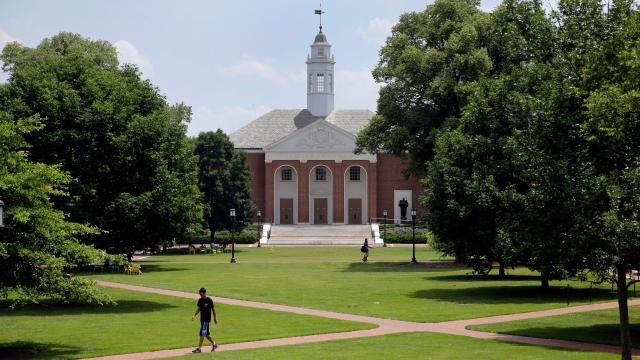Johns Hopkins, the 19th century philanthropist whose name graces some of the most prestigious scientific and academic institutions in America, was long thought to be a man who deplored slavery and fought to abolish the ownership of human beings in the U.S. But as it turns out, Hopkins actually owned other people over the course of his adult life, according to new research released by Johns Hopkins University.
“For most of the last century, our institutions believed Johns Hopkins to be an early and staunch abolitionist whose father, a committed Quaker, had freed the family’s enslaved people in 1807,” Ronald J. Daniels, the president of Johns Hopkins University, wrote in a blog post Wednesday.
The source for the modern day belief that Hopkins didn’t own slaves can be traced to a 1929 book by Helen Hopkins Thom, a grandniece to Johns Hopkins. The book, Johns Hopkins: A Silhouette, was published by the JHU Press and relied on a lot of “family tales” and didn’t cite any sources beyond the memories of his extended family.
Daniels explains that there’s never been a definitive history written of Hopkins the man and researchers were tipped off to his ownership of people by private individuals over the summer. The university looked into the claim and found slaves listed next to Hopkins in U.S. Census records from the mid-19th century.
“But over the past several months, research being done as a part of the Hopkins Retrospective has caused us to question this narrative. We now have government census records that state Mr. Hopkins was the owner of one enslaved person listed in his household in 1840 and four enslaved people listed in 1850. By the 1860 census, there are no enslaved persons listed in the household,” Daniels wrote in his new blog post.
However, Johns Hopkins University researchers did not include copies of the slave schedules, which Gizmodo was able to find on Ancestry.com.

The first column after the name of the slave owner was the number of slaves, the second was the age of the slave, the third was the sex of the slave, and the fourth column was the “colour” of the slave.
As Daniels notes in his announcement, the name of the enslaved people are not listed in the Census records. But the University has pledged to continue its work digging into the life of its namesake.
“We are fully committed to continuing this research wherever it may lead and to illuminating a path that we hope will bring us closer to the truth, which is an indispensable foundation for all of our education, research, and service activities,” Daniels wrote on Wednesday.
“We are not alone in undertaking the difficult but essential work of reckoning with a complex history and the legacy of racial injustice,” Daniels continued. “This is a solemn responsibility and an important opportunity not only to seek truth but also to build a better, more just, and more equitable future for our institution and all we serve.”
